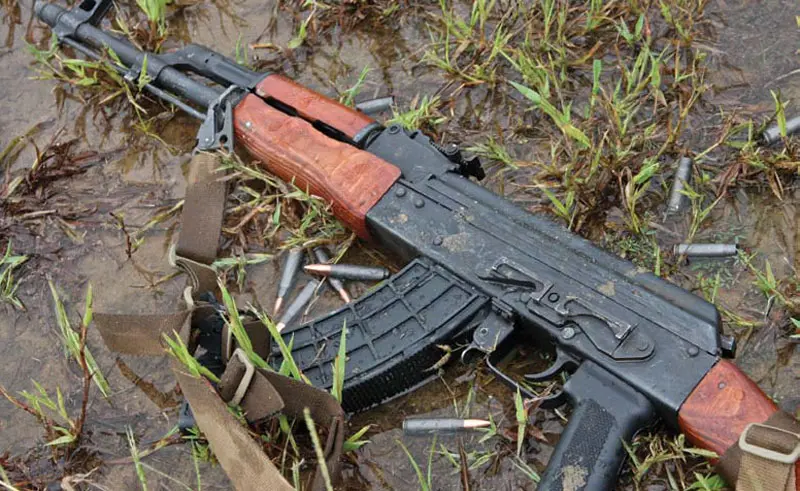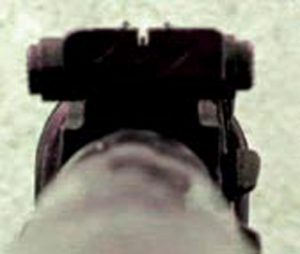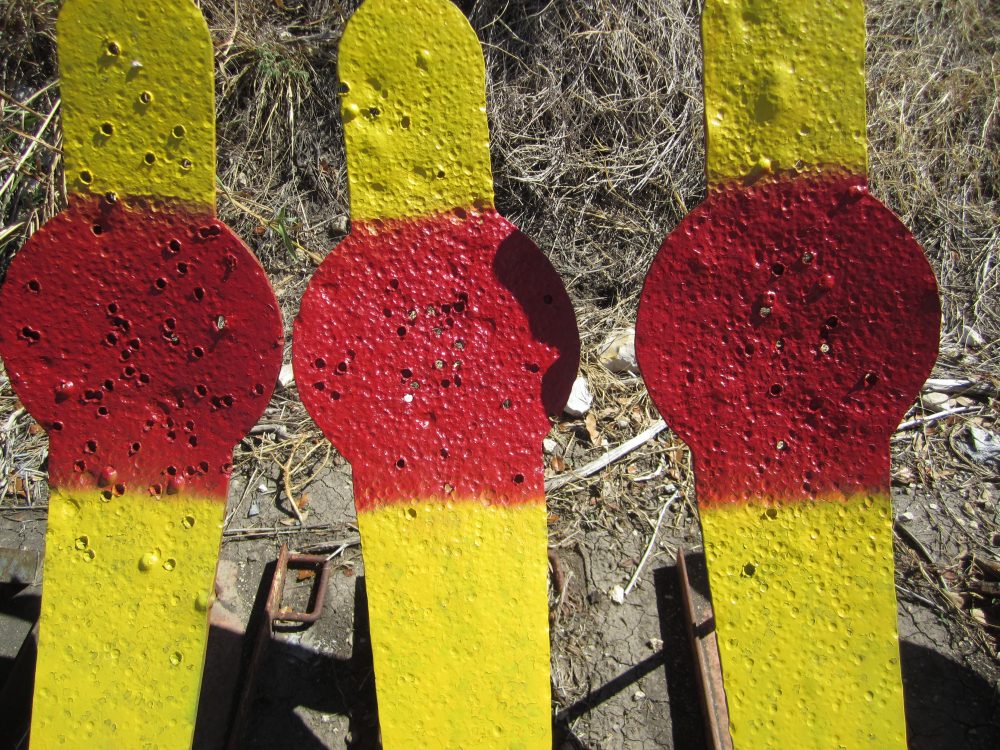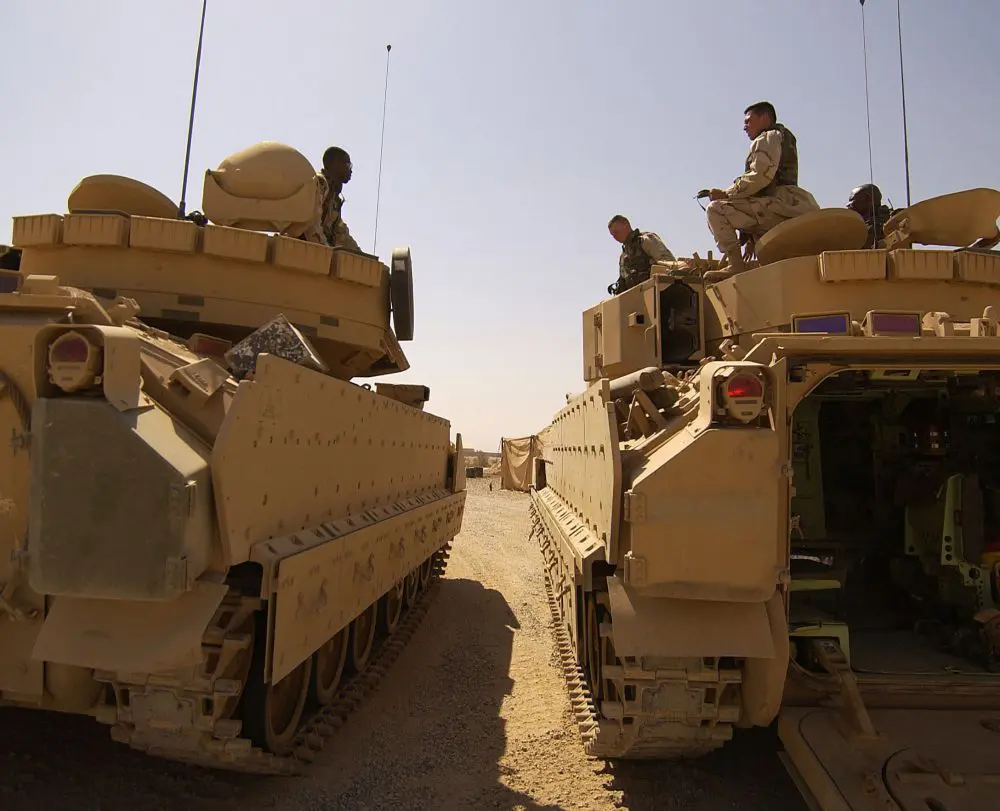Many Americans have little interest in or experience with the Kalashnikov, and I was admittedly in this crowd.
I recently had the opportunity to attend an EAG Carbine Operator Course with the new BCM EAG M4A1 (CARBINE WEDDING: Bravo Company/ EAG Tactical M4A1 Carbine, June 2011 S.W.A.T.). While there, I borrowed one of Pat Rogers’ AKs to rectify my lack of AK training.
Since the class was broken down into two relays, I would fire the BCM AR on the first relay and then hustle to switch rifles and mag pouches to shoot the AK with the second relay. This provided a great side-by-side perspective in a demanding training environment.
I thought the comparison might be slanted from the beginning—but I was in for a surprise. I have years behind ARs and almost no experience with the AK. The rifles were separated by an equally wide gulf—an exceptionally high-quality, purpose-spec’d M4 variant from a top-shelf maker and a rough, bargain-bin WASR Romanian AKM.


Table of Contents
IMPRESSIONS
After zeroing and the first few drills, the first thing that grabbed my attention was the overall “fit” of the AKM. If your frame of reference is shooting from the bench, doing precision position shooting or something more traditional, the fit is unlikely to impress. This was probably my personal reference point in earlier attempts to warm up to the Kalashnikov. However, as an in-close fighting carbine, the fit was superb.
The stock length encourages a proper fighting stance, and the overall length is very balanced and manageable. The little hump at the rear of the handguards allows the forward hand to bring some resistance back into the rifle to anchor it for fast follow-up shots. The layout shoulders very quickly and well, with the sights coming right into the visual plane as the stock is mounted. The overall fit of the Russian rifle just plain works and simply means business.

You shoulder the AKM and, with a little knowledge of carbine skills, find the rifle laid out for aggressive manipulation. This is in contrast to decades of American service rifles, which can and certainly have been used aggressively, but their overall fit and balance imply deliberate positional use and leave the user working against the stock length, layout and balance at carbine distances.
SAFETY
The safety is among the larger hurdles for Western shooters with the AK. The long lever on the right side of the receiver serves as a dust cover in the “safe” position and also blocks movement of the bolt, an interesting feature that keeps rough handling from cycling the action and leaving the bolt out of battery when the weapon is needed. The safety requires a deliberate step to disengage, as the lever sweeps across a considerable arc under strong tension in order for the stamped “divot” to find the corresponding slot in the receiver.

The outstanding ergonomics of the AR that allow the thumb to simply close into a firing grasp to disengage the safety are never as appreciated as when attempting the same drills and fumbling with the AK lever. It’s difficult to find a method that reliably works to positively disengage the safety within the motions of mounting the gun.
I have large hands and was able to keep my thumb hooked around the pistol grip and my four fingers together in a salute-like posture, sweeping the safety lever down as my hand closed around the grip, but this was still slightly awkward, definitely added time into the workflow, and may not work well for average hands or not at all for “stubs.”
SIGHTS
As mentioned, the sights come right into view as the gun is mounted. That is about the only good thing you can say for them! American shooters who sight down the AK’s barrel will invariably have a reaction somewhere between frustration and disgust.
Despite meter graduations that extend out way past Fort Mudge, there was clearly no real appreciation for the precision application of the shot in Mikhail’s mind. The rear blade is too far away from the eye and too narrow, while the front sight is shaped poorly and too wide. You can shoot well with the provided sights, but you’ll have to work hard to find an acceptable alignment and not lose any smallish target under the sight picture.
Good shooting has been done with miserable sights for many years, as the hundreds of thousands of doughboys struggling against their ’03 Springfields could attest, but it places the shooter at a disadvantage in time and effort.
Adjusting the abysmal sights is a “bring a friend and a set of tools” affair, and I gave up on one milled AK that broke a front sight adjustment tool without budging. It was nearly off target at 50 yards, so I stuck to the rougher WASR, which was more or less “on.”
TRIGGER AND RECOIL
With the target aligned with the suboptimal sights, the next thing that jumps out is the trigger. The trigger has a considerable amount of weighted movement through an arc. It reminds me more of a double-action pistol pull than a good rifle trigger, although not an exact analogy. I did, however, feel that many hours’ experience on double-action pistols allowed me to run the Kalashnikov trigger without drama. I think that the trigger could be an obstacle to those used to crisp, light breaks.
The recoil impulse of the AK works well with the stock design, exhibiting as manageable recoil that rocks a little as the action spring cycles the next round, but the front sight is easily tracked and returns to target. I had expected the recoil force and/or rhythm to be somewhat of an issue as I switched back and forth between the AR and AK, but was pleasantly surprised that such wasn’t a problem at all from standing or kneeling.
But in rapid fire from prone, the slick metal buttcap would begin to slide as the rocking motion got more leverage.

RELOAD
The last major difference to overcome was the reload. The rocking motion to hook the magazine’s lip into the receiver and then lock it back took a significant amount of attention to not goon it up, especially given the rough-edged, stamped, non-existent “mag-well” on the Romanian rifle. Particularly frustrating was the fact that if you miss the lip with the magazine’s hook and continue to rock the mag back, it’s easy to wedge the rear of the magazine into the receiver and have to forcefully tug it out in order to try again.
When by good luck or providence I was able to hook the lip on the first try, I then had to will myself to reach over and rack the bolt to cycle a round in— not at all intuitive for an AR shooter. With the BCM M4A1, I was consistently the first on the line to complete reloads during drills, the layout of the weapon seemingly meant to be reloaded at warp speed. Switching over to the Russkie, I was pushing not to be the last on the line.
LESSONS LEARNED
One of Pat’s instructors, who has considerable time overseas working with units that use the AK, saw that I was working the commie gun and said, “You’re going to want to use gloves.” When this guy talks, there is a point to what he’s saying, yet I was slow to heed the warning. Most of the way through the second magazine of fast pairs, I noticed the handguard becoming uncomfortably warm, and by the time I had rocked in a third mag I needed a glove.
This same instructor then saw me flatten to prone and try to monopod off the magazine to poor effect. He pointed out that the extra curvature of the magazine, drop in the buttstock, and slick metal buttplate all add up to offset the extra stability of magazine monopod prone with the slowdown caused by the teeter-totter effect under recoil.
His recommendation was to use conventional prone and bear the side of the magazine against the inside of the forearm to stabilize the AK and hasten the return of the sights for follow-up shots. This worked like a champ.
Ahhh … the sights.
For most work inside 25 yards, I used the sights almost like express sights, picking the front sight slightly up over the rear blade and just holding slightly low into the target. This worked well on all shots larger than the brain box.
At distance, I noticed that I had a strong tendency to string shots low and realized that I was seeking verification of the target and trending the front sight deeper into the notch rather than maintaining alignment. It wound up being faster to just shade the sight picture up slightly than to blot out the target underneath.
An important point I recognized was that the protective ears around the front sight post were entirely possible to mistake for the front sight at speed and under stress. The resulting misalignment is enough to throw a shot off target, even relatively close in.
I had success running the tail of a Vikings Tactics Sling around the wrist of the laminated wood stock and then attaching it by an HK snap hook to the built-in sling loop forward of the handguard. This gave the rifle a very similar hang and feel to the M4A1, with the sling run from the PR-4 at the castle nut to the built-in QD socket on the LaRue rail.
BATTLEFIELD PICK-UP AS TRAINING EXPERIENCE
Most foreign weapons training that organizations conduct is really nothing more than familiarization. There are no standards and no push to perform with the weapon, just an overview of how it operates and then a casual expenditure of rounds downrange.
I wanted to know if I could run the AK and to what degree, so that if one winds up at hand when it’s really needed, I would know what to expect. That calls for no-kidding training. Running the Kalashnikov in a formal class setting such as the EAG Carbine Operator Course forced me to run the gun on demand against the full range of carbine tasks. No excuses and no do-overs for fumbles.
The ego is a powerful thing if harnessed. No experienced shooter wants to come to the line and be the slowest or have the nastiest target. In familiarization training, there are few expectations and a mutual acceptance of poorer performance due to equipment. By throwing a battlefield pick-up into a regular class setting, the shooter must work overtime to beat the familiarity deficit and still meet the standard for each drill. It’s a fantastic way to jumpstart skills growth and gain a rapid appreciation of unfamiliar gear.
However, if a shooter prefaces each trip to the line or to check the target with excuses about the unfamiliarity of the equipment, it is counterproductive and the shooter is better off spending training time gaining confidence on issued weapons until he can “own” his performance.
For a shooter who has enough time on the gun that a basic class does not truly challenge him, there’s a lot to be said for the handicapping a foreign weapon provides. I could pick up a BCM EAG carbine and everything would feel so right that thousands of repetitions upstream of that day would kick in and I’d flow through the drills—challenged but shooting from that sweet spot of unconscious competence.
However, hustling back to the truck to dump the AR and grab the 7.62x39mm WASR for the second relay, I was suddenly performing absolutely from the front of my brain, every action deliberate and consciously executed.
“Sweep that safety lever, yeah on the other side of the gun!”
“Mount the gun, where’re the sights? Man, that notch is narrow!”
“Front sight … press … no, roll, keep rolling.” *Bang!* “Where’d the front sight go?”
I was suddenly having to think about all the fundamentals and consciously apply them with subtle differences in the AK, and this made switching back to the AR on the following relay that much sweeter. However, by the end of each training day, I was mentally pretty smoked.
VERDICT
I was pleasantly surprised at how well the AK did in all quick drills up close. Inside 25 yards, there was little to complain about.
As the distance stretched past that or drills required reloads, the AR began to run away with the show. On drills that emphasized distance and reloads, I was at the bottom of the class with the AKM, while I was able to jump to the other end with the M4.
On more dynamic drills up close, I scored within a point or two of my normal performance with the Kalashnikov. I had to concentrate a little harder, but gained surprisingly similar results to what the AR yielded.
I walked away from the class well prepared to run the AK and with a sizable appreciation of what the platform offers as a fighting gun. I was en route to a job overseas where I would see plenty of the AK. In Part II, we’ll look at some realities of the battlefield pick-up on a current battlefield.





